Peter Eisenman
description: an American architect known for his designs and writings that blend modernist esthetics with post-structural theory
24 results
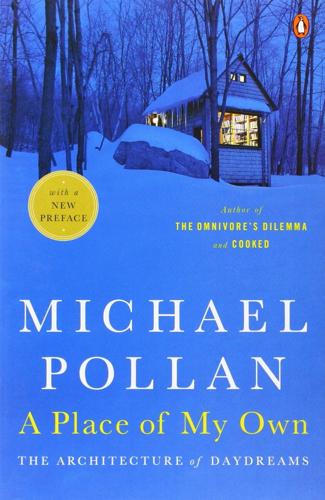
A Place of My Own: The Architecture of Daydreams
by
Michael Pollan
Published 15 Jan 1997
For that was the decade when the architectural profession fell head over heels for literary theory, of all things, and was in the throes of a rebellion against the idea there was anything “natural” or necessary about a building, beyond the basic, boring necessity of keeping the rain off your client’s head. (Not that it always succeeded at that.) Architect/theorists like Robert Venturi and Peter Eisenman held the microphone, and they were arguing in all sincerity that a building was in fact no different than a poem, that the conventions of architecture—things like gabled roofs and right angles—were just as arbitrary and culture-bound as the sounds of words in a language. Like words or letters, the meaning of these things derived not from facts of nature or the human body’s experience of space but from the system of signs or the “language” of which they were a part.
…
Charlie cautioned that watching him design my building wasn’t necessarily going to give me a fair picture of contemporary architecture, if that’s what I was looking for. “Just as long as you realize that what I do doesn’t have too much to do with all that stuff.” I hadn’t realized that, actually. Charlie had studied under a number of eminent contemporary architects—Charles Moore, at UCLA, where he went to architecture school in the late seventies; and Peter Eisenman, at the Institute for Architecture and Urban Design in New York—and his father, a former head of the architecture department at MIT, was himself fairly well known for several arresting modernist buildings in and around Boston. So Charlie wasn’t exactly an architectural naïf. I heard nothing from Charlie for a couple of weeks, and had begun to wonder what was going on when two equally perplexing items arrived in the mail.
…
Most of the prize-winning buildings, or designs, struck me as willfully idiosyncratic and, at least before I read the lengthy captions, totally perplexing. Here was a trio of silver plywood structures on a beach, each resembling a different fish washed up on shore: a carp, a ray, and a sea slug. Called Beached Houses, they were intended as artists’ housing in Jamaica. A prospective Tokyo office building designed by Peter Eisenman looked like a conventional glass-walled tower that had somehow been folded over and over again until it resembled an origami construction—a dizzying collage of multiplying facets and peculiar angles. The California architect Frank Gehry had two winners, both of them actually destined to get built.
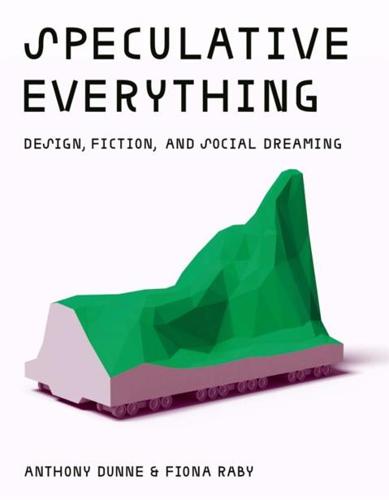
Speculative Everything: Design, Fiction, and Social Dreaming
by
Anthony Dunne
and
Fiona Raby
Published 22 Nov 2013
It was as though the owner lived inside an idea rather than a building. Beyond this lies the world of film design and more recently game design, which deals less with conceptual objects and more with imaginary worlds. We will return to this subject later in chapter 5. Peter Eisenman, House VI, east facade, 1975. Photograph by Dick Frank. Photograph courtesy of Eisenman Architects. Peter Eisenman, House VI, 1975, axonometric drawings. Drawings courtesy of Eisenman Architects. COMMODIFIED IMAGINATIONS In the fields of applied arts, graphics, fashion, furniture, vehicle, and architecture, conceptual design is a highly valued, mature, and interesting way of working, and it embraces one-off experiments by individual designers through to products available in shops.
…
There is a tension between visionary architecture, which has an outward facing social or critical agenda, and paper architecture, which, though often introspective and concerned only with architectural theory, is rarely intended to ever be built. One of the most interesting examples to cross over from idea to reality is Peter Eisenman's famous House VI (1975), which prioritized formalist concerns over practicalities to an extreme extent. The client later wrote about the many practical problems it had but still loved living in such a conceptual building." The relationship between reality and unreality is particularly interesting in architecture because many buildings are designed to be built but remain on paper due to economic or political reasons.
…
Will Bradley and Charles Esche, eds., Art and Social Change: A Critical Reader (London: Tate Publishing, 2007), 13. 16. For example, see Robert Klanten et al., eds., Furnish: Furniture and Interior Design for the 21 st Century (Berlin: Die Gestalten Verlag, 2007); and Gareth Williams, Telling Tales: Fantasy and Fear in Contemporary Design (London: V&A Publishing, 2009). 17. See Suzanne Frank, Peter Eisenman's House VI: The Client's Response (New York: Watson-Guptil Publications, 1994). 18. For a detailed discussion of device art see Machiko Kusahara, "Device Art: A New Approach in Understanding Japanese Contemporary Media Art," in Media Art Histories, ed. Oliver Grau (Cambridge, MA: MIT Press, 2007), 277307. 19.
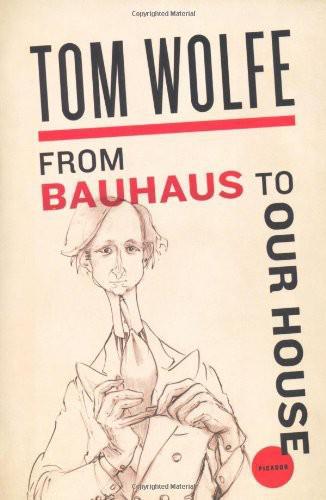
From Bauhaus to Our House
by
Tom Wolfe
Published 2 Jan 1981
They were convinced that the way to be nonbourgeois, in the new age, was to be scrupulously pure, as Corbu had been scrupulously pure, and to be baffling. Baffling was their contribution. The Whites. Architecture’s about-face avant-garde, marching resolutely back to the 1920s and Corbu’s early phase, with R & R at Gerrit Rietveld’s. Peter Eisenman, House II. Richard Meier, Douglas House. Charles Gwathmey, Bridgehampton residence. Corbu was a pane of glass compared to, say, Peter Eisenman, an architect who ran the Institute for Architecture and Urban Studies in New York, which put out the two major organs of the Whites, Oppositions and Skyline. Eisenman was Corbu, if Corbu had ever gone to Holland and been hypnotized by Gerrit Rietveld.
…
Half of America’s architects seemed to be working, if they were working at all, for the Shah of Iran. Forty percent seemed to be working for King Saud the Good. The rest stayed behind to vie for fame within the intellectual competition of the academies. In 1972, a new compound, known as the Whites, or the New York Five, made its bid with a book entitled Five Architects, the five being Peter Eisenman, Michael Graves, John Hejduk, Richard Meier, and Charles Gwathmey. They played Anselm or Abelard to Venturi’s Roscellinus. In their bid to appear original without violating the fundamental assumptions of modernism, they took the position that the true way would be found not in the land of the sprawling middle-middles but in a return to first principles.
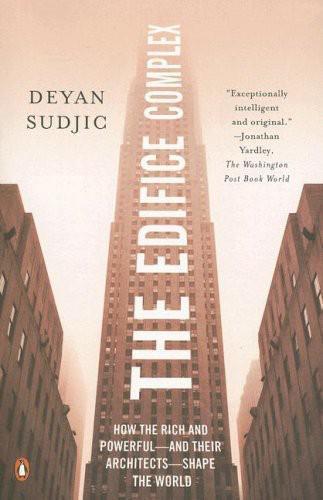
The Edifice Complex: How the Rich and Powerful--And Their Architects--Shape the World
by
Deyan Sudjic
Published 27 Nov 2006
In the flesh, the mosque is not a particularly effective way of demonstrating Iraqi defiance; and since Hussein’s purpose was to present himself as a devout Muslim, it seems unlikely that he would use the Christian calendar to do it. This emphasis on the power of numbers, if it really is intentional, was uncomfortably echoed in some of the seven plans to rebuild the World Trade Center, revealed in New York in the same week that the story appeared. Richard Meier and Peter Eisenman designed a tower 1,111 feet high, presumably on the basis that a mere 911 feet would have been too short to attract enough attention. Daniel Libeskind famously went for 1,776 feet. One interpretation of Hussein’s enthusiasm for building could be to see him simply as following in the tradition common all over Asia and the Middle East, of employing fashionable Western architects to design prestige projects to demonstrate how up to date he was.
…
It came in sections raised up to chest height, so they could be pulled apart to offer Hitler a closer look at the façades, and allow him to explore the effect from pavement level under different lighting conditions. The model was painted to suggest the materials that would have been used, and marching ranks of lead toy soldiers set the mood. Hitler would lead expeditions of dinner guests with flash lights across the garden of the Chancellery – occupied today by Peter Eisenman’s holocaust memorial – and through a specially built rear entrance to the studio to see it late at night. There were more detailed models of individual buildings, and much bigger models of Hitler’s two personal designs: the triumphal arch and the great hall. As preparations for building began, life-size replicas of sections of the façades were commissioned by Speer and installed on an outdoor site at Treptow, on the edge of Berlin, to give an idea of what to expect.
…
It is inconceivable that any other architect would have had the same treatment, not even Frank Gehry, who, with Brad Pitt in and out of his office, is certainly no stranger to stardom. The Vanity Fair photograph is a tribute not so much to the significance of Johnson’s contribution to the history of architecture as a reminder of his importance to the cult of fame. Frank Gehry sits on one side of Johnson, alongside Peter Eisenman. Arata Isozaki has flown in from Tokyo, Rem Koolhaas from Rotterdam and Zaha Hadid from London. Their presence seems to suggest not just a tribute to Johnson on their part, but a sense of an acceptance of the old man’s benediction, a laying-on of hands that has certainly helped their careers over the years.

Lonely Planet Pocket Berlin
by
Lonely Planet
and
Andrea Schulte-Peevers
Published 31 Aug 2012
Colloquially known as the Holocaust Memorial, it’s Germany’s central memorial to the Nazi-planned genocide during the Third Reich. For a space the size of a football field, New York architect Peter Eisenman created 2711 sarcophagi-like stelae rising up in sombre silence from undulating ground. You’re free to access this labyrinth at any point and make your individual journey through it. IMAGEBROKER/THOMAS FREY © Don’t Miss Field of Stelae At first, Peter Eisenman’s massive grid of concrete columns of equal size but various heights may seem austere and unemotional, but take time to feel the coolness of the stone and contemplate the interplay of light and shadow.
…
PAOLO CORDELLI/LONELY PLANET IMAGES © Berlin Top Sights Brandenburg Gate & Pariser Platz (Click here) Prussian emperors, Napoleon and Hitler have marched through this neoclassical royal city gate, once trapped east of the Berlin Wall and now a symbol of reunited Germany. DAVID PEEVERS/LONELY PLANET IMAGES © Berlin Top Sights Holocaust Memorial (Click here) Peter Eisenman poignantly captures the horror of the Nazi- inflicted Jewish mass murder with this vast undulating maze of tomblike concrete plinths. PAOLO CORDELLI/LONELY PLANET IMAGES © Berlin Top Sights Pergamonmuseum (Click here) Walk in the footsteps of Greeks, Romans and other ancient societies, whose monumental architecture, showcased in this museum, attests to their astonishingly high levels of civilisation.
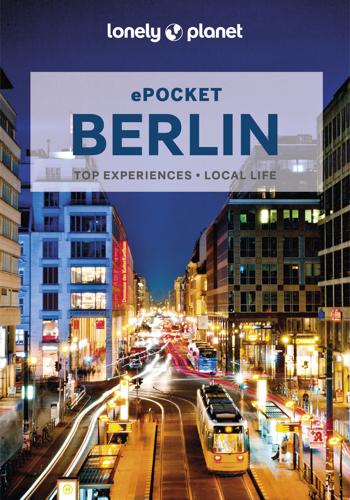
Pocket Berlin
by
Andrea Schulte-Peevers
Published 15 Mar 2023
Berlin cityscape | ACHIM THOMAE/GETTY IMAGES © Berlin’s Top Experiences 1Explore the Reichstag & Government Quarter NEIRFY/SHUTTERSTOCK © Berlin’s Top Experiences 1Marvel at the Brandenburger Tor JÖRG FARYS/EYEEM/GETTY IMAGES © Berlin’s Top Experiences 1Reflect at the Holocaust Memorial NITO/SHUTTERSTOCK ©, DESIGNER: PETER EISENMAN Berlin’s Top Experiences 1Uncover ancient artefacts at the Pergamonmuseum BPK/PIERRE ADENIS © Berlin’s Top Experiences 1Seek treasures at the Neues Museum BPK/MUSEUM FüR VOR- UND FRüHGESCHICHTE, SMB/STEFAN BüCHNER © Berlin’s Top Experiences 1Explore culture at the Humboldt Forum © STIFTUNG HUMBOLDT FORUM IM BERLINER SCHLOSS, PHOTO: ANDREAS KöNIG Berlin’s Top Experiences 1Admire old masters at the Gemäldegalerie BPK/GEMäLDEGALERIE, SMB/VOLKER-H.
…
Top ExperienceReflect at the Holocaust Memorial The Denkmal für die ermordeten Juden Europas was officially dedicated in 2005. Colloquially known as the Holocaust Memorial, it’s Germany’s central memorial to the Nazi-planned genocide during the Third Reich. For the football-field-sized space, New York architect Peter Eisenman created 2711 sarcophagus-like concrete stelae (slabs) of equal size but various heights, rising in sombre silence. EDDY GALEOTTI/SHUTTERSTOCK © map Google map Memorial to the Murdered Jews of Europe www.stiftung-denkmal.de yTop Tips AFor a more in-depth experience, hire an audioguide.
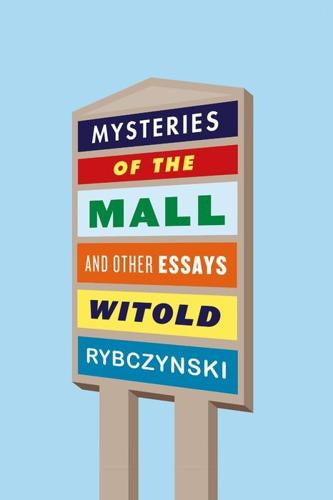
Mysteries of the Mall: And Other Essays
by
Witold Rybczynski
Published 7 Sep 2015
This is a favorite device of commercial home builders and is obviously a crowd-pleaser, although the roof has always seemed to me an odd thing to spend your money on. The complexity of the roof was mirrored by the intricacy of the windows: there were half a dozen different shapes and sizes. The modest house was hardly in a league with Frank Gehry or Peter Eisenman, but it was busy. I realized that I had to say something more substantive, but I wasn’t sure where to start. I believe that small, inexpensive houses like Danièle and Luc’s should be as simple as possible. This is partly a question of economics; complexity costs money, after all, and I would rather see a restricted budget devoted to better-quality materials than to architectural bravura.
…
Mies van der Rohe designed the Farnsworth House and Philip Johnson the Glass House, Richard Neutra built the Kaufmann House, and Charles and Ray Eames built the influential Case Study House No. 8. Postmodernism, too, has had domestic landmarks, not only the Vanna Venturi House, but also Charles Moore’s weekend cottage in Orinda, California. Then there’s Richard Meier’s Smith House, Frank Gehry’s own house in Santa Monica, and Peter Eisenman’s House VI. There have been so many significant houses that it would be easy to compile a convincing history of twentieth-century architecture illustrated solely by residences. There are several explanations for this curious fact. The simplest is that it is easier for a talented young architect to receive a small private commission than a large public one.
…
The buildings of Michael Graves, arguably the most talented of the postmodernists, progressively owe more and more to European classicism, especially to the ancient cultures of the Mediterranean. Nor is Americanness an issue in the work of what passes for the avant-garde today. Not only is the outlook of architects like Frank Gehry and Peter Eisenman international, like their practices, but if deconstructivism has any roots—other, that is, than in the Euro-American world of high fashion—it’s probably in the abstract architecture of the Russian constructivists of the early Soviet Union. As the millennium approaches, it is obvious that Johnson was mistaken: Wright was—is—America’s greatest twentieth-century architect, not only by dint of his considerable architectural accomplishments, which have proved remarkably durable, but also because of their very Americanness.

Pocket Rough Guide Berlin (Travel Guide eBook)
by
Rough Guides
Published 16 Oct 2019
Since 2016, a museum right next to the Brandenburg Gate on Pariser Platz has offered a 300-year history of the city as witnessed via its iconic gate ( 030 236 078 436, brandenburggate-museum.com; admission €5; daily 10am–6pm). Memorial to the Murdered Jews of Europe MAP Cora-Berliner-Str. 1 / Brandenburger Tor holocaust-mahnmal.de. Guided tours: 030 26 39 43 36; memorial open 24hr; information centre Tues–Sun: April–Sept 10am–8pm (last entrance 7.15pm), Oct–March 10am–7pm (last entrance 6.15pm). Peter Eisenman’s hugely controversial 2711 sombre concrete slabs (stelae) are arranged in a neat grid spread across 19,000 square metres of prime Berlin real estate near the Brandenburg Gate, the memorial’s grand scale intended as a reminder of the magnitude of the Holocaust. The slabs are purposefully varying in height to give visitors walking among them a sense of disorientation and confusion, though from above the slabs appear to make a wave-like form.
…
Kennedy visits West Berlin, delivering his famous speech, “Ich bin ein Berliner”. 1972 Access is guaranteed across East Germany to West Berlin with the Four Powers Agreement. 1987 During his second Berlin visit, Ronald Reagan makes a speech in front of the Brandenburg Gate, demanding Mr Gorbachev “tear down this wall!” 1989 Following mass demonstrations across East Berlin, the border crossings are finally opened on November 9. October 3, 1990 The two parts of Berlin are unified as part of the Federal Republic of Germany. 1997 Peter Eisenman’s controversial design for a Memorial to the Murdered Jews of Europe is chosen. 1999 Berlin becomes capital of a reunified Germany and the German government and parliament begin their work in Berlin. 2005 Openly gay mayor Klaus Wowereit dubs Berlin “poor but sexy”, which becomes a slogan for the city. 2006 The new Hauptbahnhof is opened. 2008 Tempelhof airport is officially closed; the surrounding area is later turned into a public park. 2009 Twenty years since the fall of the Wall is celebrated with a “Festival of Freedom”.
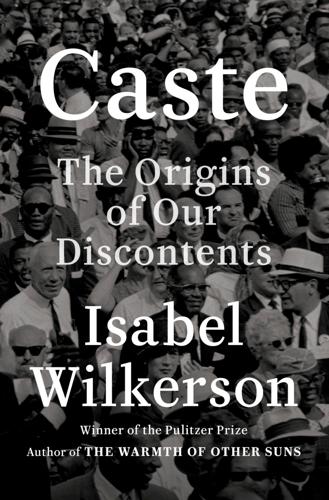
Caste: The Origins of Our Discontents
by
Isabel Wilkerson
Published 14 Sep 2020
fighting to keep monuments: Howard Koplowitz, “Legislature Passes Monuments Preservation Bill,” Alabama Live, May 19, 2017, https://www.al.com/news/2017/05/house_passes_monuments_preserv.html. “I wanted people to have”: Peter Eisenman, in “How Long Does One Feel Guilty?” Der Spiegel, May 9, 2005, https://www.spiegel.de/international/spiegel-interview-with-holocaust-monument-architect-peter-eisenman-how-long-does-one-feel-guilty-a-355252.html. This is where Hitler spent: Joachim Fest, Inside Hitler’s Bunker: The Last Days of the Third Reich (New York: Picador, 2002), p. 116. “To which I respond”: Susan Neiman, “There Are No Nostalgic Nazi Memorials,” Atlantic, September 14, 2019, https://www.theatlantic.com/ideas/archive/2019/09/germany-has-no-nazi-memorials/597937/.
…
There is no sign, no gate, no fence, no list of the 6 million. The stones are as regimented as the Nazis and as anonymous as the captives shorn of identity in the concentration camps. Since 2005, the memorial has borne mute witness to anyone who wishes to come, day or night. The designer of the memorial, Peter Eisenman, a New York architect, chose not to explain the meaning of the number 2,711, or very much else about the installation. “I wanted people to have a feeling of being in the present and an experience that they had never had before,” Eisenman told Der Spiegel the year it opened. “And one that was different and slightly unsettling.”
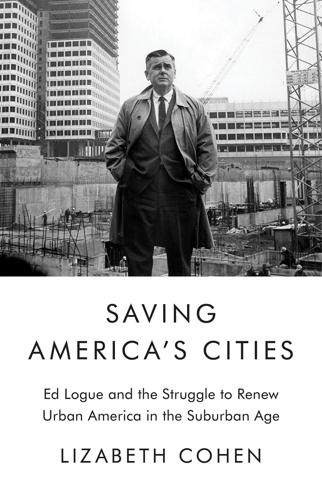
Saving America's Cities: Ed Logue and the Struggle to Renew Urban America in the Suburban Age
by
Lizabeth Cohen
Published 30 Sep 2019
After the length of time you have been working on this job, it seems to me that we ought to be able to get down to the real world without a waste of time, money, and your own unique talents.”177 These frustrations aside, Logue would remain committed to the holy grail of industrializing housing construction into his next job in the South Bronx during the 1980s. Probably the most important prototype that the UDC undertook was aimed at developing an alternative to the much-maligned high-rise public housing. In 1973, the UDC’s own inside designers Liebman and Pangaro joined Michael Kirkland, Kenneth Frampton, Peter Eisenman, Arthur Baker, Lee Taliaferro, and Peter Wolf of the Institute for Architecture and Urban Studies (IAUS), a recently founded nonprofit organization of theoretically inclined young New York architects, to invent a new kind of low-income housing: “low-rise, high-density.” Together they designed Marcus Garvey Park Village, a 626-unit project of four-story, four-unit buildings spread across six devastated city blocks in the Ocean Hill–Brownsville section of Brooklyn, part of a larger Model Cities area.
…
(THE ROOSEVELT ISLAND HOUSING COMPETITION, NEW YORK STATE URBAN DEVELOPMENT CORPORATION [BOOKLET], 1974) PLANNING MARCUS GARVEY PARK VILLAGE, 1972. Long opposed to high-rise public housing, Logue experimented with developing a low-rise, high-density alternative at Marcus Garvey Park Village in Brooklyn. Here Logue is discussing a housing prototype with the UDC architects Ted Liebman (left) and Tony Pangaro (next to Logue), and with Peter Eisenman (farther right) and Kenneth Frampton (not in photo) from the nonprofit Institute for Architecture and Urban Studies, contracted by the UDC to design Marcus Garvey. (COURTESY OF ROBERT PERRON PHOTOGRAPHY) LIVING IN MARCUS GARVEY. Logue and his colleagues hoped to demonstrate that low-rise housing could achieve the same density per acre as high-rise towers, while also creating an environment where families felt safe and in control.
…
“Appraisal, by Werner Seligmann,” in “Assessing Broadway East,” PA 55, no. 10 (October 1974): 62. On Seligmann’s Elm Street Housing, see Charles Moore, “After a New Architecture: The Best Shape for a Chimera,” Oppositions 3 (May 1974); “Scattered Site Hill Town,” PA 54, no. 5 (May 1973): 64–71. 152. Logue, interview, Steen, January 6, 1991, Boston, MA, 35–36; Peter Eisenman, conversation with Lizabeth Cohen, January 23, 2009, New Haven, CT. 153. Huxtable, “Quality Design with Amenities.” 154. Chloethiel Woodard Smith was based in Washington, DC, not Boston, but Logue called on her frequently. 155. Michael McKinnell, interview by Lizabeth Cohen, June 15, 2010, Cambridge, MA; Ieoh Ming Pei, interview by Lizabeth Cohen, June 11, 2007, New York, NY; Henry N.

Makeshift Metropolis: Ideas About Cities
by
Witold Rybczynski
Published 9 Nov 2010
Even before the town-hall meeting was over, the cowed officials of the Lower Manhattan Development Corporation announced that they would extend the deadline for completing a final master plan in order to consider fresh options.5 The six urban-design proposals were shelved, and a month later an international competition for “conceptual ideas” was announced. Four hundred and six teams responded, and seven were selected. Some of the team members had planning experience, but most were high-profile architects, among them two Pritzker Prize winners—Richard Meier and Norman Foster—such well-known designers as Charles Gwathmey, Rafael Viñoly, Peter Eisenman, and Steven Holl, and younger international architects such as Daniel Libeskind, lately of Berlin, Foreign Office Architects of London, and UNStudio of Amsterdam. The earlier urban-design proposals had taken into account such mundane factors as subway stations, transit lines, existing river tunnels, and underground infrastructure, as well as connections to Battery Park City on the west and Tribeca on the north.
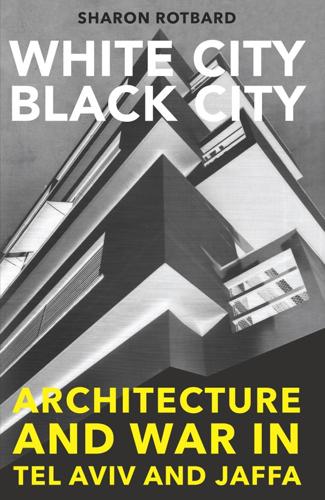
White City, Black City: Architecture and War in Tel Aviv and Jaffa
by
Sharon Rotbard
Published 1 Jan 2005
Prior to the publication of his biography in 1994, practically nothing was known or published about his Nazi past, with the exception of two articles: one by the architectural historian Geoffrey Blodgett and the other by the architect Michael Sorkin, published in 1987 and 1988 respectively. These revelations are all the more embarrassing in light of Johnson’s close relations with well-known Jewish architects like Peter Eisenman and Heads of State in Israel, like Shimon Peres (Johnson designed the nuclear plant in Nachal Sorek which Peres had advocated). See Franz Schulze, Philip Johnson: Life and Work (New York: Albert A. Knopf, 1994); Geoffrey Blodgett, ‘Philip Johnson’s Great Depression’, Timeline (June–July 1987), pp. 2–17; Michael Sorkin, Exquisite Corpse: Writing on Buildings (New York: Verso, 1991), pp. 307–311; Kazys Varnelis, ‘We Cannot Not Know History: Philip Johnson’s Politics and Cynical Survival’, Journal of Architectural Education (November 1994). 224.
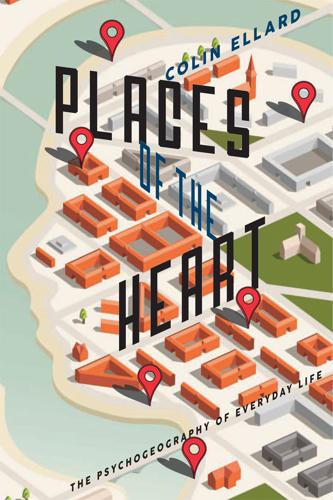
Places of the Heart: The Psychogeography of Everyday Life
by
Colin Ellard
Published 14 May 2015
As we arrived at the intersections of the walkways, we were able to see all the way to the outside of the monument through long, narrow, empty corridors that skewered us in the gaze of any faraway onlookers standing on the outside of the structure. Our disorientation among blocks that obscured our view of the outside world, the feeling of loss that came from separation from each other, and the occasional visual penetration by the long unoccluded pathways produced a powerful set of feelings: fear, anxiety, sadness, and loneliness. What Peter Eisenman, the designer of the monument had managed to do was to build a structure that resonated with small but potent echoes of many of the feelings that must have been experienced by Jews persecuted during World War II, and he had done this in such a way that the power of the experience could only be had through embodiment.
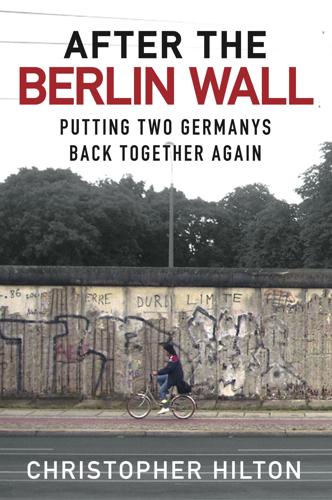
After the Berlin Wall
by
Christopher Hilton
Published 15 Dec 2011
The tourists are confronted by 2,711 unmarked concrete slabs arranged symmetrically, meaning each is freestanding and you can walk through them from north–south or east–west, corridor after corridor. Each slab slants slightly and is a different size, just as the victims were, and the middle of the area is lower so you are constantly descending or ascending. The architect, Peter Eisenman, has been quoted as saying: ‘I fought to keep names off the stones, because having names on them would turn it into a graveyard.’ At the opening ceremony Chancellor Gerhard Schröder made all the right noises and insisted that Germany was now ‘facing up to its own history’. Inevitably the memorial has drawn to itself praise and criticism – it’s too abstract, it was done too late (the idea only approved in 1999, opened in 2005), it does not commemorate all the others apart from Jews who died in the Holocaust.
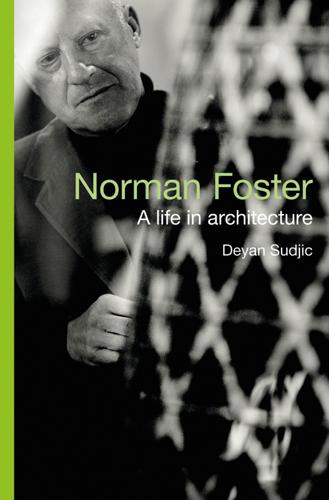
Norman Foster: A Life in Architecture
by
Deyan Sudjic
Published 1 Sep 2010
He asked the Danish graphic designer Per Arnoldi to take another look at the colour palette, which accounts for a rather more vivid interior than the one that Foster had originally intended. Foster’s experiences with Kohl bring home the difference between architecture and art. Years later, Foster got to know Richard Serra, an artist who had been engaged to work on another major project in Berlin, collaborating with the architect Peter Eisenman on the Holocaust memorial next to the Brandenburg Gate. Serra resigned after a meeting with Kohl made it brutally clear to him that the Chancellor of the German Federal Republic expected to have his views on matters of artistic policy respected. Architects do not have the same room for manoeuvre.
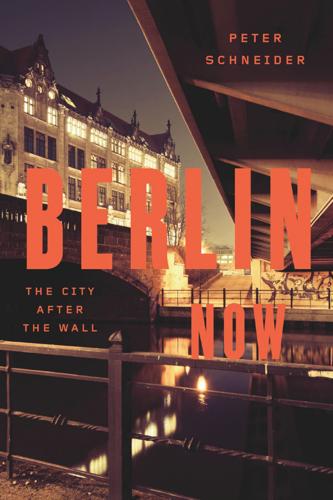
Berlin Now: The City After the Wall
by
Peter Schneider
and
Sophie Schlondorff
Published 4 Aug 2014
The “nonmonument” proposed by the previously mentioned artist duo Renata Stih and Frieder Schnock stood out from this aesthetic and moral mishmash. Instead of turning the space near the Brandenburg Gate into a memorial, they wanted to build a bus station there, from which buses would leave regularly for concentration camps and other sites in Europe associated with the German extermination machinery. The design of the New York duo Peter Eisenman and Richard Serra ultimately emerged victorious from the final round of the competition. Reminiscent of tombstones, dark gray concrete steles of various heights, arranged in narrow, parallel rows, cover a slightly undulating surface of some 4.7 acres. Thanks to the initiative of the state minister of culture Michael Naumann, an urgently needed museum, the so-called Place of Information, was added to their design for the memorial; the originally planned number of steles of various heights was reduced from 4,000 to 2,711.

The Stack: On Software and Sovereignty
by
Benjamin H. Bratton
Published 19 Feb 2016
It may be a matter of debate whether for parametricism that a shift away from representation is at work, or whether the style has introduced a formal vocabulary for the indexical expression of fast finance in building form. Schumacher, however, may not find this such a problem. See “I Am Trying to Imagine a Radical Free Market Urbanism: Conversation between Peter Eisenman and Patrik Schumacher,” Log 28 (Summer 2013). However, this is not the only perspective available. Luciana Parisi has outlined a more promising alternative grammar of algorithmic thought and practice in contrast to deterministic homeostasis and formal closure in her Contagious Architecture: Computation, Aesthetics, and Space (Cambridge, MA: MIT Press, 2013).
…
See also Sabrina Van Der Ley and Markus Richter, Megastructure Reloaded: Visionäre Stadtentwürfe Der Sechzigerjahre Reflektiert Von Zeitgenössischen Künstlern = Visionary Architecture and Urban Design of the Sixties Reflected by Contemporary Artists (Ostfildern: Hatje Cantz, 2008). 50. The Bilbao region in Spain experienced significant economic growth concurrent with the opening of the Frank Gehry designed Guggenheim Bilbao and opening in 1997. The “Bilbao effect” is a termed coined by Peter Eisenman to refer to the misguided hope of second-tier cites that adding some flashy new architectural icons would magically boost their city's brand and regional economy. 51. Perhaps a future Erich von Daniken will interpret Foster's structures as proof of alien intelligence on Earth's moon. 52. Yes, “Ladies and Gentlemen, We Are Floating in Space.” 53.
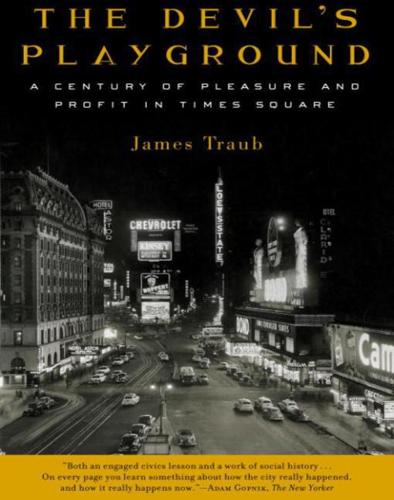
The Devil's Playground: A Century of Pleasure and Profit in Times Square
by
James Traub
Published 1 Jan 2004
His father had been the head of the largest corporate architecture firm in the United States and the dean of architecture at Rice University. While still in college, Kennon had studied at the Institute for Architecture and Urban Studies, a study group founded by a group of young architects and theorists, including Peter Eisenman and Kenneth Frampton. One of Kennon’s fellow students was Rem Koolhaas, who was working on a project that ultimately became Delirious New York, a manifesto that celebrated Manhattan’s raw power and indifference to traditional aesthetic standards, somewhat as Robert Venturi, Denise Scott Brown, and Steven Izenour had done with Las Vegas.

Germany Travel Guide
by
Lonely Planet
Berchtesgaden Learn how this breathtaking Alpine town became Hitler’s southern headquarters at the Dokumentation Obersalzberg, then exorcise Nazi ghosts on the trip up to the ‘Eagle’s Nest’ (Click here) Concentration Camps The darkest side of WWII is commemorated in camps at Bergen-Belsen (Click here), Buchenwald (Click here), Dachau (Click here), Mittelbau Dora (Click here) and Sachsenhausen (Click here) Remagen The pivotal capture of the Bridge at Remagen by American troops in March 1945 is poignantly remembered in the Friedensmuseum (Click here) Peenemünde The deadly V2 rocket was developed in a research facility on Usedom Island, now the Historisch-Technisches Informationszentrum (Click here) Nuremberg See the site of Nazi mass rallies at the Reichsparteitagsgelände, then visit the courtroom where the Nuremberg Trials took place (Click here) Laboe In this town on Kiel Firth, you can clamber around WWII-era U-Boat 995, which is similar to the one featured in the 1981 movie Das Boot (Click here) Jewish Sites Jewish history in Germany is often equated with the Holocaust, but even the Nazis could not wipe out 1600 years of Jewish life and cultural contributions to this country. Holocaust Memorial Peter Eisenman poignantly captures the horror of the Holocaust with this vast undulating maze of tomblike plinths in Berlin (Click here) Jüdisches Museum Daniel Libeskind’s extraordinary zinc-clad building in Berlin is a powerful metaphor for this eye-opening chronicle of Jewish life in Germany (Click here) Speyer Come to this Rhine city to see the oldest, largest and best preserved Mikwe (ritual bath) north of the Alps (Click here) Frankfurt am Main Two museums and a cemetery trace Jewish life, while the Wall of Names keeps alive the memory of 11,000 Frankfurt Jews murdered during the Holocaust (Click here) (Click here) Stolpersteine The cobblestone-sized brass ‘stumbling blocks’ embedded in pavements throughout Germany mark the last residence of Jews deported by the Nazis (Click here) Train Journeys Slow travel was never more fun than aboard Germany’s historic trains, some of them more than 100 years old and pulled by steam locomotives.
…
Holocaust Memorial MEMORIAL Offline map Google map (2639 4336; www.stiftung-denkmal.de; Cora-Berliner-Strasse 1; admission free, audioguide €3; memorial 24hr, information centre 10am-8pm Tue-Sun, last entry 7.15pm Apr-Sep, 6.15pm Oct-Mar; Brandenburger Tor, Brandenburger Tor) The football-field-sized Memorial to the Murdered European Jews (colloquially known as the Holocaust Memorial) by American architect Peter Eisenman consists of 2711 sarcophagi-like concrete columns rising in sombre silence from undulating ground. You’re free to access this maze at any point and make your individual journey through it. For context, visit the subterranean Ort der Information (information centre), with exhibits that will leave no heart untouched.
…
Another Jahn creation that raises interest in Berlin is the minimalist and edgy Neues Kranzler Eck (2000). Three spectacular successes in Germany designed by American star architect Daniel Libeskind (b 1946) are Osnabrück’s Felix-Nussbaum-Haus (1998), the famous zinc-clad zigzag Jüdisches Museum (2001) in Berlin and the new Militärhistorische Museum in Dresden (2011). New York contemporary Peter Eisenman achieved the remarkable by assembling 2711 concrete pillars to create the haunting Holocaust Memorial (2005). In 2006 Berlin christened a new star attraction – the vast Hauptbahn-hof, a transparent-roofed, multiple-level Turmbahnhof (tower station; the lines cross at different levels) that takes glass-and-steel station architecture to new limits.

Radical Technologies: The Design of Everyday Life
by
Adam Greenfield
Published 29 May 2017
A long walk to the east along leafy Karl-Marx-Allee—between 1949 and 1961, Stalinallee—takes you to the headquarters of the Stasi, the feared secret police of the former East Germany, also open to the public as a museum. But there’s nowhere in Berlin where the curious cost of remembering can be more keenly felt than in the field of 2,711 concrete slabs at the corner of Ebertstrasse and Hannah-Arendt-Strasse. This is the Memorial to the Murdered Jews of Europe, devised by architect Peter Eisenman, with early conceptual help from the great sculptor Richard Serra. Formally, the grim array is the best thing Eisenman has ever set his hand to—here we are most likely perceiving Serra’s influence. But as a site of memory, the Monument leaves a great deal to be desired. It’s what Michel Foucault called a heterotopia: something set apart from the ordinary operations of the city, physically and semantically, a place of such ponderous gravity that visitors don’t quite know what to make of it.
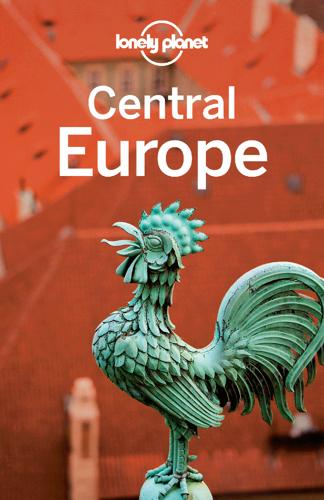
Central Europe Travel Guide
by
Lonely Planet
You might be distracted by the trendy, edgy, gentrified streets, by the bars bleeding a laid-back cool factor, by the galleries sprouting talent and pushing the envelope, but make no mistake – reminders of its once-divided past assault you while modernity sits around the corner. Norman Foster’s Reichstag dome, Peter Eisenman’s Holocaust Memorial and the iconic Brandenburg Gate are all contained within a few neighbouring blocks. Potsdamer Platz and its shiny Sony Center hosts Berlin’s star-studded film festival each year, a stone’s throw from where only 20 years ago you could climb up a viewing platform in the West and peer over the wall to glimpse the alternate reality of the East.
…
Holocaust Memorial MEMORIAL (Denkmal für die ermordeten Juden Europas; Click here ; 2639 4336; www.stiftung-denkmal.de; Cora-Berliner-Strasse 1; admission free; field 24hr, information centre 10am-8pm Tue-Sun, last entry 7.15pm Apr-Sep, 10am-7pm Tue-Sun, last entry 6.15pm Oct-Mar; S-Bahn Unter den Linden) Just south of the Reichstag, this grid of 2711 ‘stelae’, or differently shaped concrete columns, is set over 19,000 sq metres of gently undulating ground. The slate-grey expanse of walkways and pillars can be entered from any side, but presents varied sombre perspectives as you move through it. For historical background, designer Peter Eisenman has created an underground information centre in the southeast corner of the site. Unter den Linden HISTORIC AVENUE Celebrated in literature and lined with lime (or linden) trees, the renowned street Unter den Linden was the fashionable avenue of old Berlin. Today, after decades of communist neglect, it’s been rebuilt and has finally regained its former status.
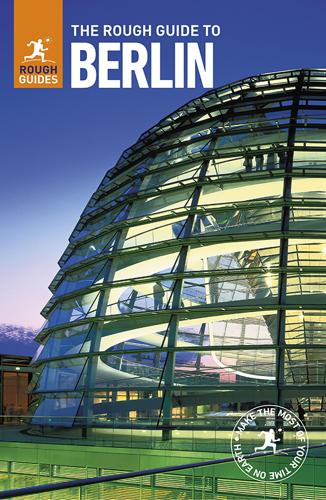
The Rough Guide to Berlin
by
Rough Guides
Memorial to the Murdered Jews of Europe Cora-Berliner-Str. 1 • Memorial 24hr; free • Tours in English Sat 3pm; €3 • Information centre Tues–Sun: April–Sept 10am–8pm (last admission 7.15pm); Oct–March 10am–7pm (last admission 6.15pm) • Free; audio tours €4 • 030 26 39 43 36, holocaustmahnmal.de • / Brandenburger Tor The block of land immediately south of the Brandenburger Tor and Pariser Platz is officially called the Memorial to the Murdered Jews of Europe (Denkmal für die ermordeten Juden Europas), and generally known as the Holocaust Memorial. Unveiled in 2006 after almost seventeen years of planning and controversy and six years of construction, the monument was the work of New York architect Peter Eisenman, who took inspiration from the densely clustered gravestones of Prague’s Jewish graveyard. It involves 2711 dark grey oblong pillars (stele), evenly and tightly spaced but of varying heights, spread across an area the size of two football pitches. As there is no single entrance, visitors make their own way through the maze to the centre where the blocks are well above head height, tending to convey a sense of gloom, isolation and solitude, even though Eisenman insists his intent was to create a “place of hope”.

Germany
by
Andrea Schulte-Peevers
Published 17 Oct 2010
Two spectacular successes in Germany designed by American star architect Daniel Libeskind (b 1946) are Osnabrück’s Felix-Nussbaum-Haus (1998; Click here) and his more famous zinc-clad zigzag Jüdisches Museum (2001; Click here) in Berlin. His transparent wedged extension to the Militärhistorisches Museum in Dresden is expected to be completed in 2010. Back in Berlin, New York contemporary Peter Eisenman achieved the remarkable by assembling 2711 concrete pillars to create the haunting Holocaust Memorial (2005; Click here). In 2006 Berlin christened a new star attraction – the vast Hauptbahnhof, a transparent-roofed, multiple-level Turmbahnhof (tower station; the lines cross at different levels) that takes glass-and-steel station architecture to new limits
…
Spend the afternoon stocking up on souvenirs along the Kurfürstendamm and in the KaDeWe, then have an early dinner before catching the latest show at the Bar Jeder Vernunft, followed by a nightcap at Galerie Bremer. * * * HOLOCAUST MEMORIAL The football-field-sized Memorial to the Murdered European Jews (Map; colloquially known as the Holocaust Memorial) by American architect Peter Eisenman consists of 2711 sarcophagi-like concrete columns rising in sombre silence from undulating ground. You’re free to access this maze at any point and make your individual journey through it. For context visit the subterranean Ort der Information (information centre; Map; 7407 2929; www.holocaust-mahnmal.de; Cora-Berliner-Strasse 1; admission free, audioguide adult/concession €3/1.50; 10am-8pm Tue-Sun Apr-Sep, to 7pm Oct-Mar, last admission 45min before closing), whose exhibits will leave no one untouched.

Italy
by
Damien Simonis
Published 31 Jul 2010
In 2008, the city’s sporadic garbage-disposal crisis flared up again, leading frustrated residents to set fire to uncollected rubbish in the streets. More promising has been the recent inauguration of a major theatre festival, a still-under-construction high-speed rail terminal by British-Iraqi starchitect Zaha Hadid and a planned revamp of Pompeii’s train stations by prolific US architect Peter Eisenman. * * * OUR TOP FIVE FILM LOCATIONS IN CAMPANIA Naples’ airy Piazza del Gesù Nuovo, where acting great Sergio Solli makes his anything-but-menacing phone threats in No Grazie, Il Caffè Mi Rende Nervoso (1982). Caserta’s blue-blooded Palazzo Reale, whose interiors moonlight as Queen Amidala’s pad in Star Wars: Episode 1 - The Phantom Menace (1999) and Star Wars: Episode 2 - Attack of the Clones (2002).